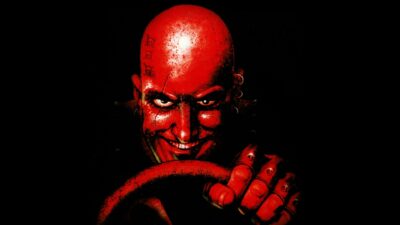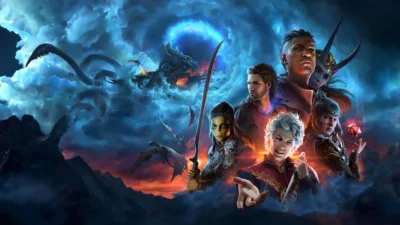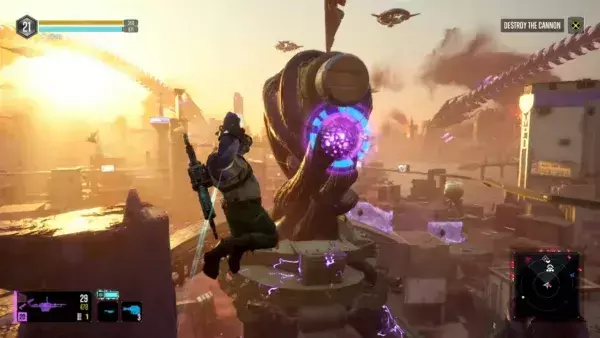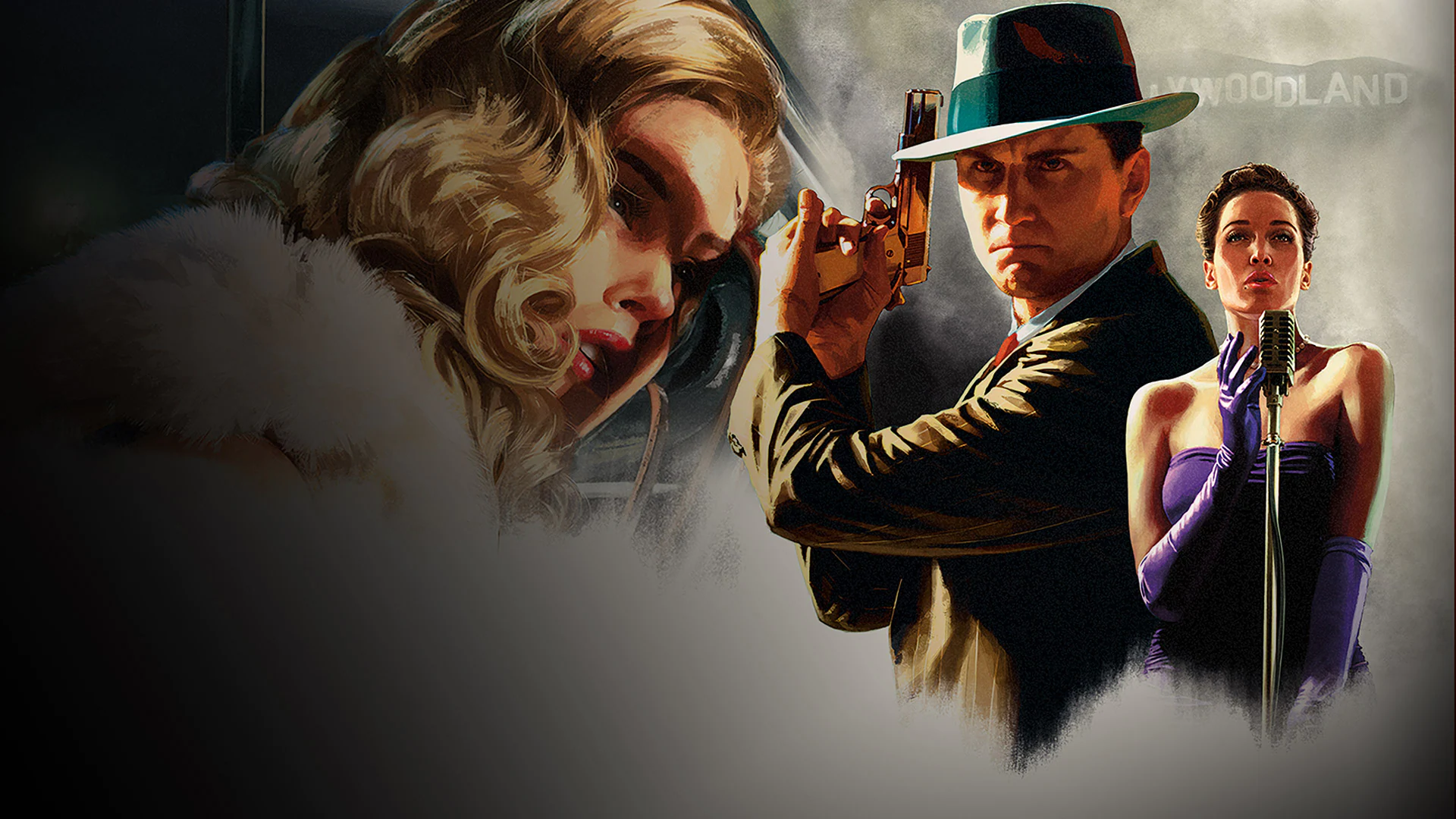
Widely praised for its technical achievements, 2011’s L.A. Noire is also a dark portrait of postwar misogyny.
NB: The following contains spoilers throughout. If you haven’t already, we recommend playing L.A. Noire before reading.
There’s a tendency, particularly among Americans, to romanticise World War II era culture and the postwar economic boom. There’s something about the big bands and jazz clubs, poplin day dresses, and smoking anywhere you please that has a seemingly indelible appeal. Media often stokes this yearning for a technologically and economically simpler time. It’s nostalgia for an era that fewer and fewer people have even experienced first-hand.
The America of the 1940s and 1950s wasn’t all cheesecake pin-up art and Thunderbolt Roadsters, however. In fact, they were pretty hard times for anyone who wasn’t a straight white Christian man. It’s difficult to find historical fiction that accurately portrays the reality of the prejudice and provinciality of the post-war era. When you do, many often don’t analyse it critically and lose themselves in the Glenn Miller tunes and affordable family homes.
Enter L.A. Noire: a video game that came out in 2011 but hit its targets with unnerving precision. The making of L.A. Noire is deserving of an article by itself; it was a groundbreaking action-adventure that prioritised a complex story over reflexes, but its development was troubled from beginning to end, and culminated in the closure of Team Bondi, the studio behind it. All told, L.A. Noire spent seven years in production, with multiple changes in publishers, personnel, and release dates.
Despite its long, rough road to release, however, L.A. Noire made history by becoming the first video game to be selected for the Tribeca Film Festival. It sold millions of copies and is still avidly played years later. Few 2010s-era console games are still discussed with such fervour as L.A. Noire.
The technical and design achievements of L.A. Noire, such as characters that emote with convincing facial expressions instead of stiffly reciting lines, undoubtedly shifted the direction narrative-driven games would take in the ensuing decade. When The Guardian interviewed the lead developers when L.A. Noire was released, the discussion revolved around its technological accomplishments rather than its worldbuilding and writing.
Even though the team diligently researched countless aspects of day-to-day life in the late 1940s, alongside police procedures of the era, not much is said about the world its characters live in aside from its noir detective fiction references. But L.A. Noire contains shockingly realistic portrayals of the deeply-embedded misogyny in American society that came home to roost after soldiers returned from World War II – and is still palpable today.
Trauma and misogyny
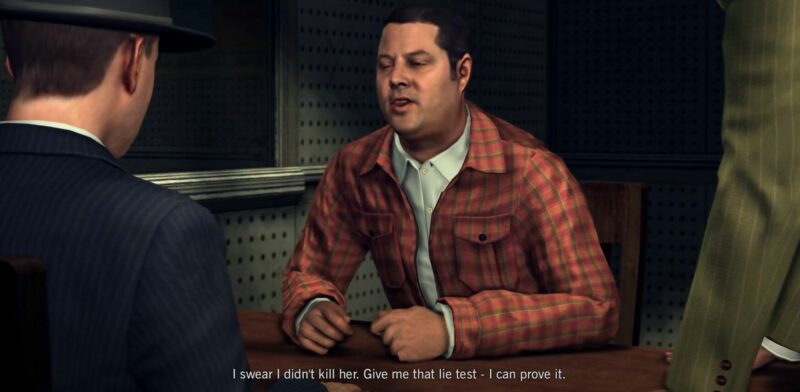
Credit: Rockstar Games.
L.A. Noire’s narrative encompasses another under-discussed aspect of the postwar era: the repressed trauma experienced by millions of drafted soldiers, not all of whom received a warm welcome home, and how that trauma affected their daily lives. But it’s time that discussion was had about L.A. Noire’s depiction of the misogyny prevalent in the postwar era, since the game did so in ways that the writers both intentionally and inadvertently portrayed.
The 1940s were a strange time as far as women’s roles were concerned, and L.A. Noire brilliantly portrays their postwar disenfranchisement. At the height of noir films and novels, women were often cast as the femme fatale, the jilted divorcee, the playful ingenue, or the intrepid adventurer. American society wasn’t exactly an egalitarian haven for women in the 1930s, but it had nothing on the social norms that ramped up in the postwar era.
Women were drafted into the workforce the way that men were drafted into the army. Iconography like Rosie the Riveter represented women on factory floors and other jobs once typically occupied by men. But once the war ended, the hourglass flipped: women were largely banished to the home and subordinate roles whether they wanted to be there or not.
The famous photo of a sailor grabbing a nurse and kissing her without her consent when the news broke that America won the war? It set the tone for what would come when media forces and public policy pushed the dedicated homemaker archetype as the feminine ideal. L.A. Noire depicts this social push, with a majority of its women characters being in roles of servitude: housewives, secretaries, phone operators, and rape and murder victims.
The latter are often gruesomely displayed, while the male corpses you stumble on are always fully clothed. But this game gets a pass from this common video game transgression because the female corpses aren’t gratuitous. They’re based on murder cases that happened in real life and serve as environmental storytelling of how The Werewolf kills his victims. Meanwhile, the killer taunts protagonist Cole Phelps (played by Mad Men’s Aaron Staton) and his homicide desk partner Rusty Galloway (Michael Grady) during the latter’s protracted investigation.
As part of their search, Cole and Rusty track down a necrophiliac who has friends with the same preference, and Carruthers the medical examiner even reveals that he had to fire his assistant because he found out he associates with them. Nevertheless, the player is hammered with the reminder that women have no peace from being used and violated even in death – a problem society is still dealing with almost 80 years later.
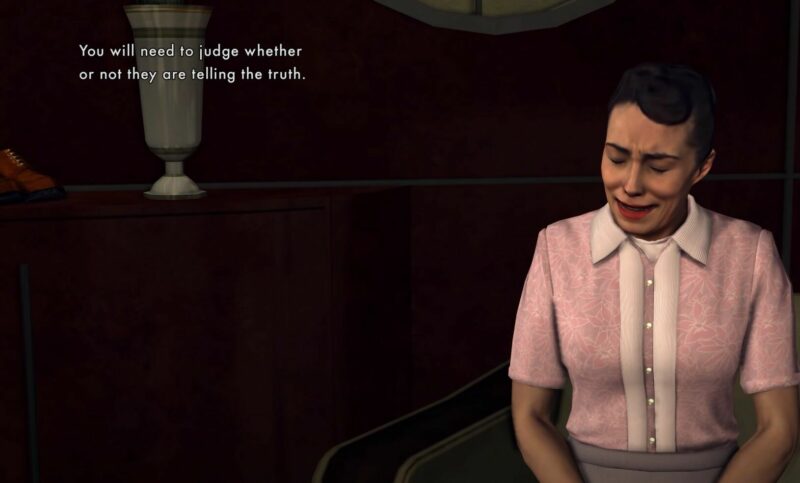
Credit: Rockstar Games.
The homicide cases are some of the most disturbing in the game, and would remain so even if they hadn’t been inspired by real-life murders that occurred in LA and Chicago. They’re disturbing because they’re depicted as being an everyday occurrence.
The Werewolf, we eventually learn, was Garrett Mason, a temp bartender – one of many witnesses Cole (and therefore the player) interrogates throughout the course of the game. The case sheds light on a social standard that unfortunately hasn’t changed much since: all of the women The Werewolf killed could easily have their murders pinned on an abusive husband, a man who lusted after them, or a random angry man.
Most importantly though, they aren’t perfect victims. These women didn’t have happy home lives. They drank heavily, hence the unsuspected bartender. Some were promiscuous, or in the case of Celine Henry, she was the abuser, though it’s notable that even the strangely progressive Cole doesn’t extend sympathy towards her husband. To this day, men who’ve experienced intimate partner violence are often sidestepped and unacknowledged.
Violence against women, meanwhile, be it by a husband or a stranger, always has a “What did she do to provoke him?” or “Why didn’t she just leave?” string attached. In real life, women must be utterly virginal to be believed as victims – and even that’s not a guarantee the cops will actually take their murders seriously. Rusty believes The Werewolf chooses his victims based on not having access to sex – he theorises that the killer is perhaps a husband taking out his frustrations with his wife on other women.
If you disobeyed your husband and ventured out in the big bad world, the thinking of the time went, becoming another crime statistic was your fate. Despite your chances of encountering a serial killer while out at night being fairly minuscule regardless of gender, this mentality has persisted into the 21st century, and has been weaponised against women for decades.
Close up on Cole
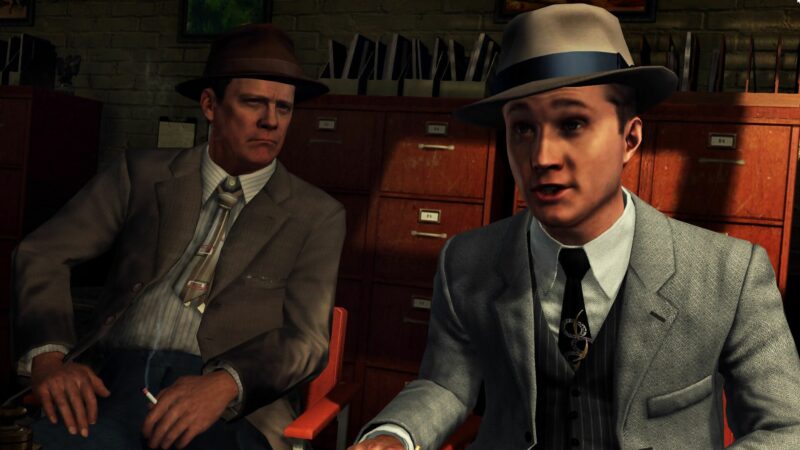
Credit: Rockstar Games.
The misogyny of the postwar era isn’t just present in the remarks every cop makes in L.A. Noire, or when Cole interrogates male suspects who insist their marriages are happy but they hit their wives. It’s in the way that women are used as tools and hardly act on their own accord.
Unlike other characters in L.A. Noire, Cole usually demonstrates respect and courtesy to the secretaries, retail workers, and female witnesses he must interrogate. His progressive values are out of place given his privileged position, the era he lives in, and the way you hear virtually everyone else in the game talk to and about women and minorities.
He isn’t blasé about violence against women like Rusty is. Nor does he share fellow detective Roy Earle’s outright disdain for women that is seen numerous times and exemplified in the street crime case, Fatal Plunge, when he groans that that police should just stay out of domestic disputes because, “You were dumb enough to marry him, don’t come crying to me.” And yes, this same “you chose the wrong guy” victim-blaming rhetoric is still deployed against women who are abused and murdered by male partners.
Nevertheless, there’s a woman Cole frequently must use as a tool: the Records and Identification switchboard operator, voiced by actor Melanie Marnell. As a game mechanic, the operator is little more than a nameless voice throughout the game, always there to give Cole, and later Jack Kelso, a helping hand. It might not seem that deep, since being a switchboard operator was a respectable pink collar job back then, but the character still sets the tone that in this time and place, women serve men and their ‘place’ is underneath them (figuratively and literally).
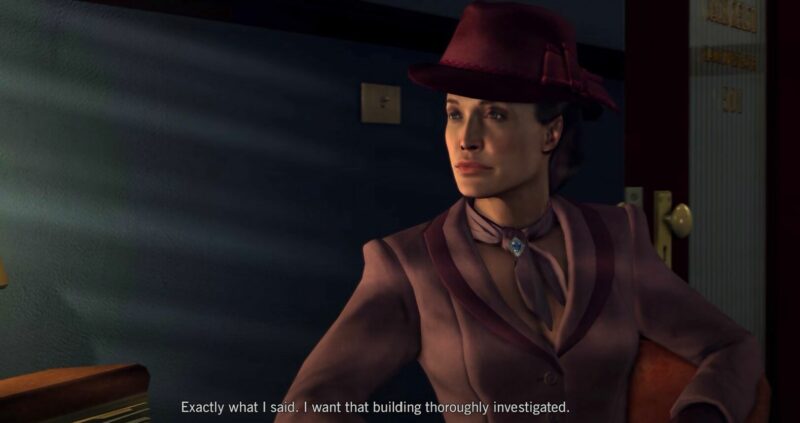
Credit: Rockstar Games.
Cole is an interesting character because he’s a stickler for upholding laws, systems, and their inherent rigidity, yet he doesn’t buy into the white male supremacist hierarchy that dominates postwar society. In a time when domestic violence is brushed off as normal and even expected in married life, he doesn’t tolerate seeing perps or co-workers hitting women. Cole even acknowledges the operator by profusely thanking her for her lightning-fast research skills on numerous occasions.
It’s noteworthy because, to this day, women’s labour is often unrecognised, unnoticed, and exploited. Of all the jarring aspects of L.A. Noire, this exchange is among the most endearing. With gender equality in the 2020s rolling back to the era you’re reading about, many women long for a genuinely caring and protective man like Cole in their lives. If not as a romantic partner – as a bona fide friend and ally who makes an effort to hold other men accountable. Because beyond the game mechanics, the women Cole meets through his cases are virtually always being used by someone else for a more sinister or selfish purpose. They often have little agency, and their attempts to exercise what agency they do have are roundly punished.
The most notable example of this is in the vice desk case, The Set Up. The murder of Candy Edwards is heartbreaking on several levels, but also demonstrates Cole’s depth of character.
Candy’s murdered in a bus station bathroom. You discover that Candy was going to take the money from the bookies and run, because what other options did unmarried women really have for long-term financial security back then? It cost less to live in LA in the 1940s, but women didn’t have many choices when it came to careers that provided a comfortable living. Women couldn’t even rent apartments by themselves or have their own bank accounts until almost 30 years after L.A. Noire took place.
Candy tried to escape and find a fresh start, but never even made it out of the bus station. She met a violent death and became another corpse in the morgue, her life extinguished when the man she served no longer saw a use for her. But as she utters her last words, Cole shows Candy genuine kindness. It’s a deeply moving moment in an otherwise bleak game that doesn’t flinch from showing the darker side of postwar America.


